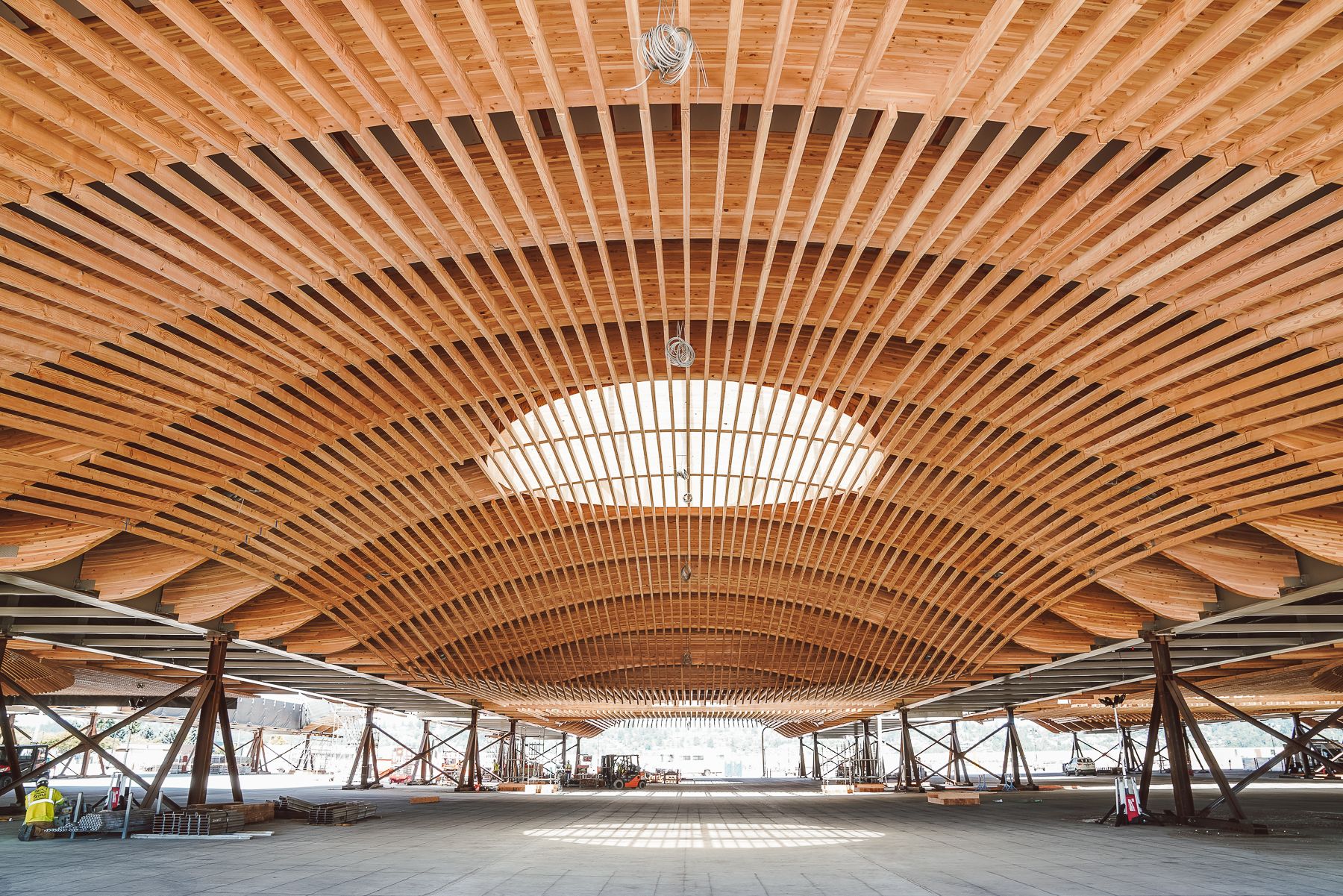Discover why leading developers are choosing glue-laminated timber to meet sustainability goals while cutting construction costs.
We are now in an era where sustainability can no longer be just a buzzword, but a business imperative; the materials you choose are paramount, and mass timber is leading in innovation. Imagine cutting your project’s carbon footprint by up to 75% while simultaneously enjoying faster construction times and a beautiful and biophilic structure. Traditional building materials, such as concrete and steel, come with a significant environmental cost. They can also add days to the construction schedule. Building with mass timber can help reduce these current issues.
This blog post will delve into our world of mass timber, focusing on glued-laminated timber (glulam) and its potential to revolutionize construction. We’ll explore the carbon advantages, differentiate between various mass timber products, and provide actionable insights to help you make the switch.
What Makes Glulam and Mass Timber Different?
Glue-laminated timber bonds multiple layers of dimensional lumber with moisture-resistant structural adhesives. These glulam beams and columns rival (and can often exceed) the strength of steel and concrete. The result is a single structural member that is stronger than steel by weight and incredibly versatile. We engineer these beams and columns to meet precise specifications, enabling large open spaces (like the new Portland Airport roof) and stunning architectural designs that are challenging to achieve with other materials (see our case studies here).
Unlike traditional materials that release carbon during production, mass timber products actually store carbon throughout a building’s lifetime. Every cubic meter of glulam used in construction sequesters approximately one ton of CO2, effectively turning your building into a carbon vault.
The Numbers That Matter: Real Carbon Savings
Research from recent commercial projects demonstrates the dramatic impact of choosing mass timber:
Carbon Storage Benefits
- A typical 12-story mass timber building can store approximately 3,000-4,000 tons of CO2
- Glulam beams sequester carbon for 50-100+ years of building life
- Each ton of wood products used saves 3.9 tons of CO2 emissions compared to steel
Manufacturing Impact:
- Producing glulam generates 80% less greenhouse gas than steel production
- Manufacturing energy requirements are 50% lower than those of reinforced concrete
- Water usage drops by 30% compared to traditional materials
Construction Phase Advantages:
- Reduced transportation emissions due to lighter material weight
- 25% faster construction timelines mean fewer equipment emissions
- Minimal on-site waste with precision-manufactured components
Real-World Carbon Savings
The Village SF project showcases the potential of mass timber, achieving a 25-30% reduction in global warming potential compared to concrete and steel. Bowdoin College’s Barry Mills Hall showcases even more savings, with embodied carbon reductions of 75-80% over conventional steel. The new roof of the PDX airport showed a significant decrease in carbon savings, as well as a reduction in the need for additional construction due to its unique design. These real-world examples highlight the tangible benefits of choosing mass timber.
Making the Switch: Your Next Steps
Ready to dramatically reduce your project’s carbon footprint with glue-laminated timber? Here’s how to get started:- Early Design Integration: Involve mass timber specialists during conceptual design for maximum optimization (our COO, John, is a wizard with this stage)
- Carbon Calculation: Request a comparative carbon analysis between traditional and mass timber options
- Supply Chain Planning: Secure glulam suppliers early to ensure project timeline alignment
- Team Education: Ensure your architects, engineers, and contractors understand mass timber best practices
The Future is Already Being Built
The mass timber revolution is already here. With over 1,200 mass timber projects completed or under construction across North America, glue-laminated timber has proven itself as the sustainable structural solution for forward-thinking developers. As carbon regulations tighten and market demand for sustainable buildings intensifies, projects utilizing glulam and mass timber will lead the way and be future-proof investments against evolving building codes.
Transform Your Next Project with Glulam
The choice is clear: it’s time to adapt for the future. Join the growing movement of developers using glue-laminated timber to build a sustainable future. With proven carbon reductions, superior performance characteristics, and compelling economic benefits, mass timber is the new standard for the future of construction.
